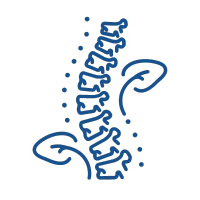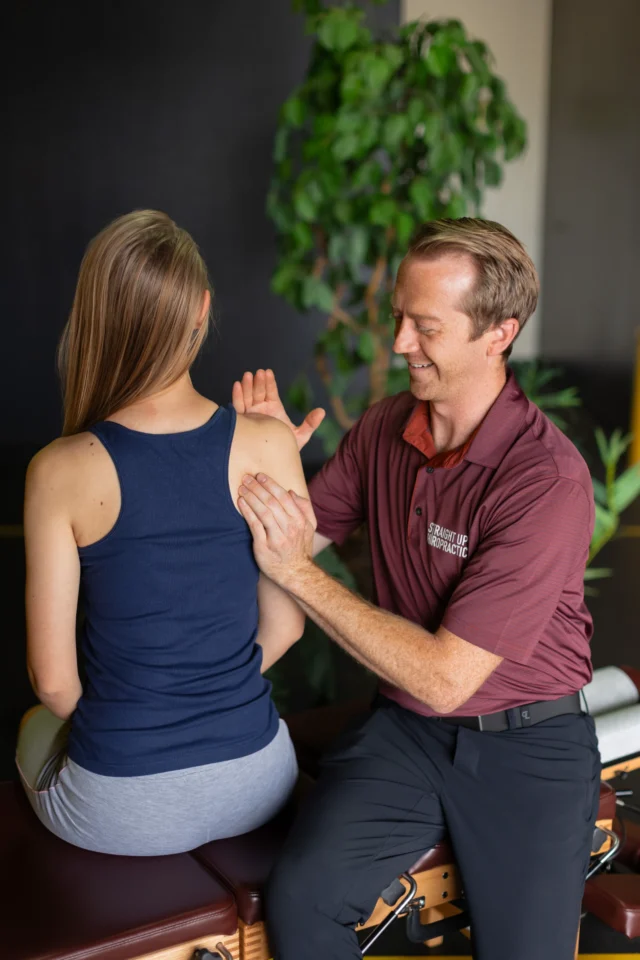Bicep tendonitis can turn simple daily activities into painful challenges. Whether you’re reaching for something on a high shelf, lifting a grocery bag, or playing your favorite sport, this common condition affects millions of people and can significantly impact your quality of life.
The good news? With the right understanding and treatment approach, you can overcome bicep tendonitis and return to the activities you love. This comprehensive guide will walk you through everything you need to know about this condition, from its underlying causes to effective treatment options, including specialized chiropractic techniques that address the root cause of your pain.
Understanding Bicep Tendonitis: What Happens in Your Body
Bicep tendonitis occurs when the tendons connecting your biceps muscle to your shoulder and elbow become inflamed or irritated. Your biceps muscle has two tendons at the top (long head and short head) that attach to different parts of your shoulder, and one tendon at the bottom that connects to your forearm.
The long head tendon is most commonly affected, as it travels through a narrow groove in your upper arm bone (humerus) and can easily become irritated with repetitive motion or overuse. When these tendons become inflamed, the result is pain, weakness, and limited range of motion that can affect your daily activities.
The Anatomy Behind Your Biceps: Why Location Matters
Your biceps muscle sits at the front of your upper arm and plays a crucial role in several movements. It helps you flex your elbow, rotate your forearm, and assists with shoulder flexion. The muscle’s unique attachment points make it particularly susceptible to injury.
The long head tendon passes through the bicipital groove, a narrow channel in your shoulder. This confined space means that any swelling or inflammation can quickly become problematic. Additionally, the tendon’s position makes it vulnerable to impingement from surrounding structures, especially when shoulder mechanics are compromised.
Understanding this anatomy helps explain why treating bicep tendonitis often requires addressing not just the local inflammation, but also the broader shoulder mechanics and muscle imbalances that may have contributed to the problem.
Common Causes of Bicep Tendonitis
Several factors can contribute to the development of bicep tendonitis:
Overuse and Repetitive Motion
Athletes and workers who perform repetitive overhead motions are at higher risk. This includes:
- Baseball pitchers and tennis players
- Swimmers and rock climbers
- Construction workers and painters
- Weightlifters performing repetitive bicep exercises
Age-Related Changes
As we age, our tendons become less flexible and more prone to injury. People over 40 are more likely to develop tendonitis due to natural wear and tear on the tendons over time.
Sudden Increase in Activity
Rapidly increasing your activity level or starting a new exercise routine without proper conditioning can overwhelm your tendons’ capacity to adapt, leading to inflammation.
Shoulder Impingement
When the space between your shoulder blade and upper arm bone narrows, it can pinch the bicep tendon, causing irritation and inflammation.
Poor Posture and Muscle Imbalances
Forward head posture, rounded shoulders, and weakness in supporting muscles can alter shoulder mechanics and place excessive stress on the bicep tendon.
Recognizing the Symptoms: When to Seek Help
Bicep tendonitis symptoms can range from mild discomfort to severe pain that interferes with daily activities. Key symptoms include:
Pain and Tenderness
The most common symptom is pain at the front of your shoulder or upper arm. This pain may:
- Worsen with overhead activities
- Increase at night, especially when lying on the affected side
- Feel like a deep ache or sharp pain
- Radiate down toward your elbow
Weakness and Fatigue
You may notice decreased strength when:
- Lifting objects
- Performing pulling motions
- Carrying items with your arm extended
Limited Range of Motion
Stiffness in your shoulder or elbow may prevent you from:
- Reaching overhead
- Moving your arm behind your back
- Fully straightening or bending your elbow
Audible Sounds
Some people experience clicking, popping, or grinding sounds when moving their arm, which may indicate tendon irritation or inflammation.
How Chiropractic Care Addresses Bicep Tendonitis
Chiropractic care offers a comprehensive approach to treating bicep tendonitis by addressing both the symptoms and underlying causes. Unlike treatments that focus solely on reducing inflammation, chiropractic care examines your entire kinetic chain to identify and correct the root problems contributing to your condition.
Restoring Proper Joint Function
Chiropractors use specific adjustments to restore proper movement and alignment in your shoulder, elbow, and related joints. When joints move correctly, they reduce stress on surrounding tendons and muscles, allowing the healing process to begin.
Addressing Muscle Imbalances
Bicep tendonitis often develops due to imbalances between opposing muscle groups. Chiropractic care identifies these imbalances and uses targeted techniques to restore proper muscle function and coordination.
Improving Nerve Function
Proper nerve function is essential for muscle coordination and healing. Chiropractic adjustments help ensure optimal nerve communication, which supports your body’s natural healing processes.
Specialized Techniques: AMIT and NPI for Bicep Tendonitis
Two advanced techniques offer particularly effective treatment for bicep tendonitis:
Advanced Muscle Integration Technique (AMIT)
AMIT is a cutting-edge approach that identifies and corrects muscle inhibitions that contribute to tendonitis. This technique:
- Pinpoints exactly which muscles are not firing properly
- Reactivates inhibited muscles through specific protocols
- Restores proper muscle coordination and strength
- Addresses compensatory patterns that led to the injury
Dr. Gavin Hall is one of only two practitioners in Southern Utah trained in AMIT, making this advanced technique available to patients seeking comprehensive care for bicep tendonitis.
Neural Pathway Integration (NPI)
NPI focuses on restoring proper neurological connections between your brain and muscles. This gentle, non-invasive technique:
- Corrects neurological inhibitions
- Improves brain-body communication
- Enhances natural healing processes
- Prevents future injuries by optimizing muscle function
Dr. Hall is the only chiropractor in the area certified in NPI, offering patients access to this innovative treatment approach.
The Benefits of Full-Body Approach to Healing
Treating bicep tendonitis effectively requires looking beyond the local area of pain. A full-body approach offers several advantages:
Identifying Root Causes
Your bicep tendonitis may be the result of problems elsewhere in your body. Poor posture, hip dysfunction, or foot problems can create compensatory patterns that eventually lead to shoulder and arm issues.
Preventing Future Injuries
By addressing the entire kinetic chain, full-body care helps prevent future episodes of tendonitis and other related injuries.
Optimizing Overall Function
When your entire body works in harmony, you experience better performance, reduced fatigue, and improved quality of life.
Addressing Multiple Issues Simultaneously
Many patients have several areas of dysfunction that contribute to their pain. A comprehensive approach can address multiple problems during each treatment session.
Your Path to Recovery Starts Here
Bicep tendonitis doesn’t have to control your life. With proper understanding, appropriate treatment, and preventive strategies, you can overcome this condition and return to the activities you enjoy.
The key is finding the right healthcare provider who understands the complexity of your condition and can address not just your symptoms, but the underlying causes that led to your injury. Specialized techniques like AMIT and NPI offer advanced treatment options that can accelerate your recovery and help prevent future problems.
Don’t let bicep tendonitis keep you from living your best life. Take the first step toward recovery by scheduling an appointment with Straight Up Chiropractic to develop a personalized treatment plan tailored to your specific needs and goals.



